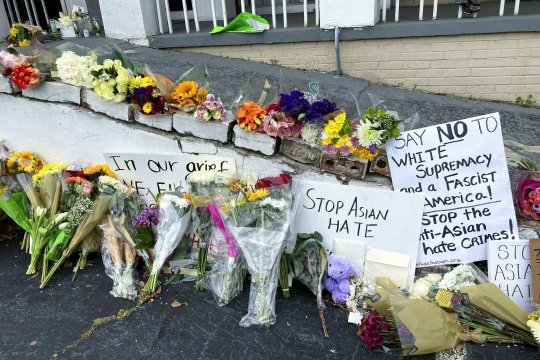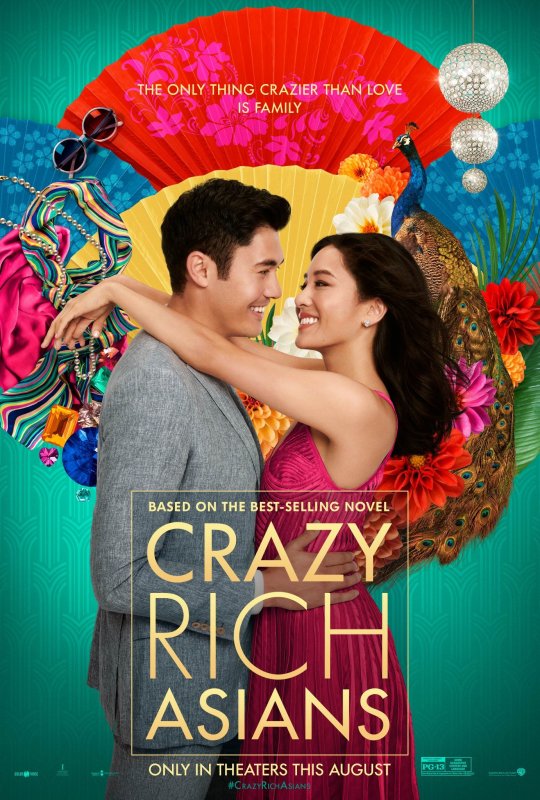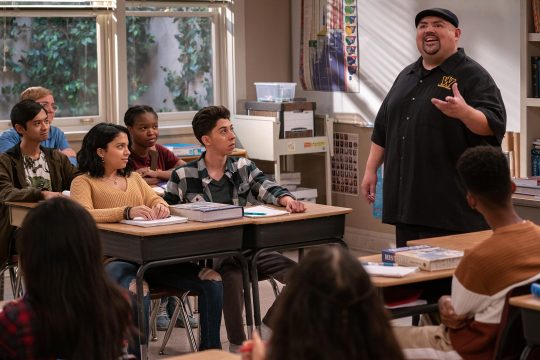Text
Multimedia Blog 3
The AAPI Equity Alliance is a nonprofit organization, created in 1976, that advocates for the rights for the Asian American and Pacific Islander community. I found out about the organization on Instagram. During the heat of the COVID-19 pandemic of 2020, the start of #StopAAPIhate became widely known. Attention was finally brought on the discrimination and violence against Asian Americans and Pacific Islanders. The AAPI Equity Alliance also cofounded another organization called Stop AAPI Hate.

Though attention was brought towards the racism and discrimination on Asian Americans and Pacific Islanders in 2020, it is a concept that has been practiced since Asian Americans first arrived in the United States. An example of this is mentioned in chapter 8 of Takaki’s book Searching For Gold Mountain. During 1849, many Chinese migrants, specifically men, came to America to seek refuge from the British Opium Wars and came to work in America temporarily. Many white-Americans sought the presence of Chinese families as a threat to racial homogeneity. In order to restrict immigration into America, the Chinese Exclusion Act of 1882 was passed. Another example of discrimination and racism more recently is in 2020, at Donald Trump’s rally in Tulsa, Oklahoma. He refers to COVID-19 as “The China Virus” and the “Kung Flu”. Another example in recent years was a shooting that took place on March 16, 2021 in Atlanta, Georgia when six Asian-American women were shot to death at their jobs by a Caucasian American. In Rising Against Asian Hate: One Day in March, the episode reflects on the incident. One part of the episode highlights the law enforcement’s initial reflection on the case. There was a lack of awareness and lack of cultural sensitivity on hate crimes such as this particular case. Racism and discrimination towards Asian Americans is also shown in the media industry. Practices such as “yellowface” and “whitewashing” are shown in many films. In an article for the Sydney Morning Herald, Xan Brooks highlights the use of ‘yellowface” makeup in the movie Cloud Atlas (2012). The article mentions a statement by Guy Aoki highlighting that “this approach reflects the same racial pecking order that the entertainment industry has been practicing for years”.

Though racism and discrimination are still present in today’s society, organizations such as the AAPI Equity Alliance helps break these unethical practices by strengthening the community by civic engagement, capacity building, and policy advocacy.
Citations:
Takaki, Ronald. A Different Mirror: A History of Multicultural America. Little, Brown, 2008.
“Trump calls the coronavirus the 'kung flu.'” YouTube, 21 June 2020, https://www.youtube.com/watch?v=fN2tgtcKGck.
“Rising Against Asian Hate: One Day in March | Rising Against Asian Hate: One Day in March.” Thirteen.org, 17 October 2022, https://www.thirteen.org/programs/rising-against-asian-hate-one-day-in-march/rising-against-asian-hate-one-day-in-march-hx833d/
“AAPI Equity Alliance.” AAPI Equity Alliance Website – Website for the Asian American Pacific Islander Equity Alliance, 15 September 2021, https://aapiequityalliance.org/
Brooks, Xan. “Cloud Atlas attacked over 'yellowface' make-up.” Sydney Morning Herald, 29 October 2012, https://www.smh.com.au/entertainment/movies/cloud-atlas-attacked-over-yellowface-makeup-20121029-28f01.html.
0 notes
Text
Multimedia Blog 2

The film Crazy Rich Asians (2018) is about Rachel Chu, an American- born Chinese NYU game-theory professor, traveling with her boyfriend Nick Young to his hometown of Singapore for his best friend’s wedding. She is surprised to learn that his family is very wealthy. His mother and relatives were very disapproving of their relationship because Rachel is a Chinese-American and is not what Nick needs, which she thinks is to move back to Singapore to take over the family business and marry a girl from a rich family that prioritizes raising a family rather than focusing on her own career. Throughout the movie, there is a social conflict because of the difference between classes in society.
This film impacted the Asian-American community because it helped break the Asian stereotype typically seen in movies. The film broke these stereotypes by being the first mainstream and global romantic-comedy that features an all Asian cast. This is very similar to the impact Godzilla made on society. The creation of Godzilla impacted Asian-American art and displayed other works of art that displayed Asian-American culture. Godzilla was an inspiration, creating an alliance between various Asian artists showcasing their skills, working and supporting each other in unity. Crazy Rich Asians mirrors this by inspiring audiences and the film industry to break the asian stereotype and invokes the need to expand diversity in the media.
youtube
Beyond the predictable and limited examples of Asians portrayed on the big screen, Hollywood also ostracized Asian actors by casting Caucasian actors for Asian roles. An example of this is seen in Breakfast at Tiffany’s (1961) of Mickey Rooney’s portrayal of Mr. Yunioshi. The act of “whitewashing” in films is a practice that the entertainment industry has been practicing for years. Another recent film that practiced “yellowface” was Cloud Atlas (2012). It is noticed that every Korean character in the film is portrayed by a Caucasian actor in yellowface makeup.


The film Crazy Rich Asians influenced the Asian-American community immensely, being one of the highest grossing romantic comedies featuring a predominantly asian cast. The film breaks away from the asian stereotypes and racist portrayals the entertainment industry tends to practice and most significantly, highlights the need of diversity on the big screen.
Citations:
New York Film Academy. “Asian Representation in Film: The Impact of 'Crazy Rich Asians.'” New York Film Academy, 8 February 2019, https://www.nyfa.edu/student-resources/asian-representation-crazy-rich-asians/.
Eckhardt, Giana M. and Kerrigan, Finola (2019) "Crazy Rich Asians: A tale of immigration, globalization and consumption in East Asia," Markets, Globalization & Development Review: Vol. 4: No. 3, Article 5. DOI: 10.23860/MGDR-2019-04-03-05. https://digitalcommons.uri.edu/cgi/viewcontent.cgi?article=1106&context=mgdr
Brooks, Xan. “Cloud Atlas attacked over 'yellowface' make-up.” Sydney Morning Herald, 29 October 2012, https://www.smh.com.au/entertainment/movies/cloud-atlas-attacked-over-yellowface-makeup-20121029-28f01.html. Accessed 5 December 2022.
Zia, Helen, and Margo Machida. One Way Or Another: Asian American Art Now. Edited by Susette S. Min, et al., Asia Society with Yale University Press, 2006.
“Crazy Rich Asians- Opening Scene.” YouTube, https://www.youtube.com/watch?time_continue=6&v=2odn_xMxuXM&feature=emb_logo
Chu, John M., director. Crazy Rich Asians. Warner Bros. Pictures, 2018.
0 notes
Text
Multimedia Blog 1
Mr. Iglesias is a Netflix sitcom starring comedian Gabriel Iglesias. The series revolves around a history teacher, Mr. Iglesias, who ends up teaching students because they are doing poorly and saves them from being kicked out by the Assistant Principal. The show touches on effective themes and development that build towards the academic decathlon to test the work done by Mr. Iglesias at the end of the school year.

The show encompasses the topic of multiculturalism in schools in episode 6 titled “Bullying”. In the beginning of the episode, the school passes out brochures and encourages the students to use more inclusive language regarding gender, orientation, abilities, nationality, and ethnicity. Marisol, one of Mr. Iglesias' students, points out that the brochure indicated the wrong term for the Latinx Community, calling them “latinos”. She informs that “Too many cultures have used the masculine term to refer to all people.” This scene was very significant because it tackles the theme of racial, linguistic, and cultural tension. Marisol acts like a mirror for Mr. Iglesias, showing him that reception is important as intention, and that language is subject to change. This is very similar to how the youth helped Judy Baca redefine the intersection of art and activism, she would allow the youth to participate in the creation of the murals, giving them a voice. The scene also explains the adaptation of the term “latinx”. The term “latinx” was emerged from the Spanish-speaking queer community in order to challenge the gender binary and make it more inclusive for those who do not want to be identified by a gender.
youtube
The scene also connects with Susan Saulny’s article “Black? White? Asian? More Americans Choose All of the Above '', in the article, Saulny addresses that multiracial people were forced to identify as one race or another. In the same episode, Mr. Iglesias explains that he had a similar problem when he was younger on how he should identify. He states when he was born, on his birth certificate, there were only two options to describe what he was: either Afro-American or Caucasian. Then there was a third box named “other”. This mirrors a very similar topic with what Saulny was addressing in the article, the lack of full racial identification.
The Netflix sitcom, Mr. Iglesias was eye opening by how subtly, yet overtly political the show can be. By reflecting on themes such as multiculturalism in schools and racial identification, the show highlights the harsh realities of various communities.
Citations:
Taborn, Tyrone D., and Dara N. Byrne. Learning Race and Ethnicity: Youth and Digital Media. Edited by Anna Everett, MIT Press, 2008. Accessed 2 December 2022.
Salinas, C. & Lozano, A. (2021). History and Evolution of the term Latinx. (pp. 249-263).
Saulny, Susan. “More Young Americans Identify as Mixed Race.” The New York Times, 29 January 2011, https://www.nytimes.com/2011/01/30/us/30mixed.html.
“Bullying.” Mr. Iglesias, created by Netflix, season 1, episode 6, 2019. Youtube, https://youtu.be/vCZ56OLMPV0.
2 notes
·
View notes